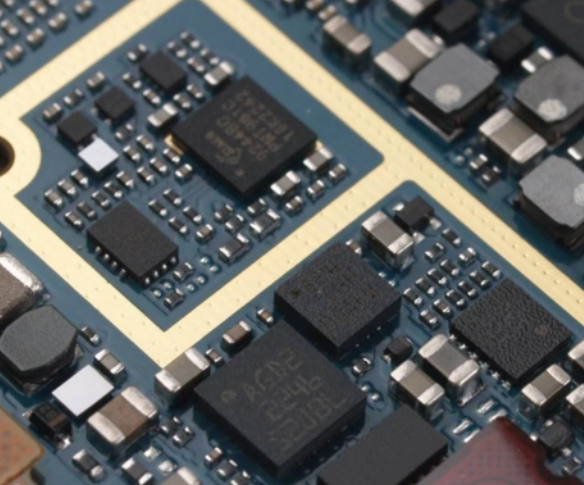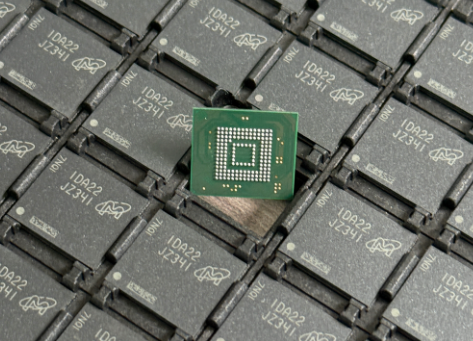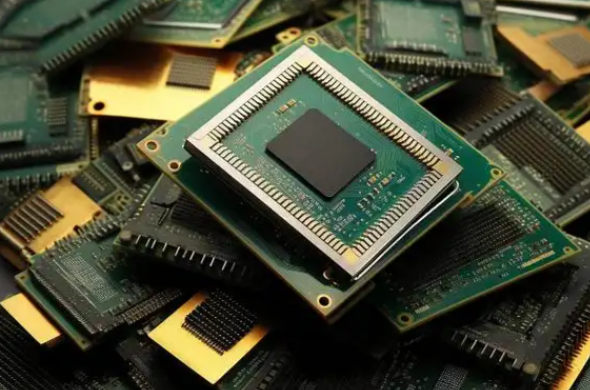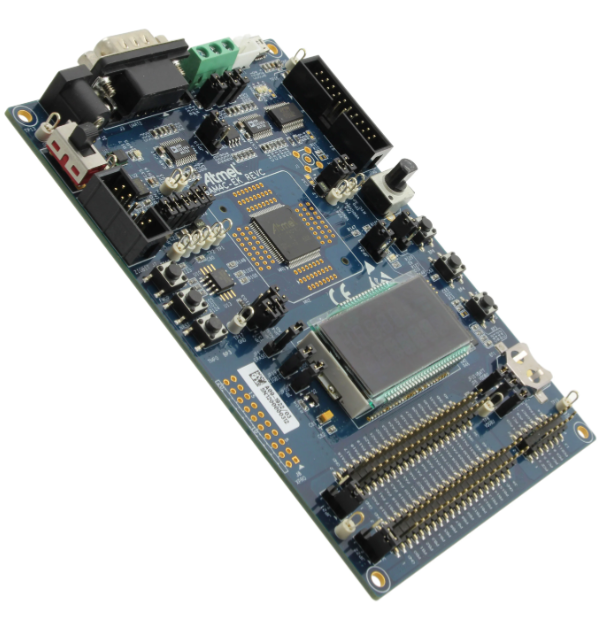The Ultimate Guide to Shenzhen Electronic Component Platforms
Introduction
In the rapidly evolving world of electronics, sourcing reliable components is a critical challenge for engineers, procurement specialists, and hobbyists alike. Shenzhen, often referred to as the “Silicon Valley of Hardware,” has emerged as a global epicenter for electronic manufacturing and component distribution. The city’s ecosystem is supported by numerous Shenzhen electronic component platforms that have revolutionized how businesses and individuals access everything from basic resistors to advanced integrated circuits. These digital marketplaces have transformed traditional supply chains, offering unprecedented access to components that power everything from consumer gadgets to industrial machinery. The rise of these platforms represents a significant shift in the electronics industry, moving from fragmented, localized sourcing to streamlined, global digital procurement. This article explores the landscape of Shenzhen electronic component platforms, examining their key features, benefits, and how they compare to traditional sourcing methods, while highlighting how platforms like ICGOODFIND are shaping the future of electronic component procurement.

The Evolution of Electronic Component Sourcing in Shenzhen
From Physical Markets to Digital Platforms
Shenzhen’s journey to becoming an electronics powerhouse began with the famous Huaqiangbei market, a physical marketplace that grew from humble beginnings into one of the world’s largest electronics components distribution hubs. For decades, this bustling district served as the primary destination for anyone seeking electronic components, with countless small shops and stalls offering everything from basic components to sophisticated modules. However, this traditional model presented numerous challenges, including geographical limitations, inconsistent quality control, language barriers, and difficulties in verifying supplier credibility. The digital transformation began in the early 2000s as Chinese internet penetration increased and e-commerce platforms gained popularity. Pioneering companies recognized the opportunity to bring Shenzhen’s massive component inventory online, creating digital marketplaces that offered global accessibility, transparent pricing, and verified supplier networks. This transition marked a fundamental shift in how the electronics industry sources components, democratizing access to Shenzhen’s vast resources regardless of a buyer’s physical location.
Technological Drivers Behind Platform Development
Several technological advancements catalyzed the development of sophisticated electronic component platforms in Shenzhen. The proliferation of high-speed internet and mobile technology created the infrastructure necessary for real-time inventory management and seamless cross-border transactions. Advanced search algorithms and component classification systems enabled users to navigate complex product catalogs containing millions of SKUs. Artificial intelligence and machine learning technologies further enhanced these platforms through intelligent component matching, predictive inventory management, and automated quality assurance processes. Blockchain technology began addressing counterfeiting concerns through immutable component provenance tracking, while IoT sensors enabled real-time monitoring of shipment conditions and locations. Cloud computing provided the scalable infrastructure needed to handle massive product databases and concurrent users from around the world. These technological innovations collectively transformed what began as simple online catalogs into sophisticated procurement ecosystems that offer end-to-end solutions for electronic component sourcing.
Market Forces Shaping Platform Evolution
The evolution of Shenzhen electronic component platforms has been significantly influenced by broader market forces within the electronics industry. The increasing complexity of electronic devices created demand for more specialized components, while shorter product life cycles intensified pressure on sourcing speed and flexibility. Globalization of electronics manufacturing distributed supply chains across multiple countries, creating need for platforms that could seamlessly connect international buyers with Chinese suppliers. The rise of small-batch production and maker culture generated demand for platforms catering to lower volume orders that traditional distributors often overlooked. Periodic component shortages highlighted the value of platforms with extensive supplier networks that could locate scarce parts during supply constraints. Environmental regulations and sustainability concerns drove development of platforms specializing in certified components and eco-friendly alternatives. These market forces continue to shape platform development, pushing operators to innovate constantly in response to evolving industry needs and challenges.
Key Features of Leading Shenzhen Electronic Component Platforms
Comprehensive Product Catalog and Search Capabilities
The most valuable Shenzhen electronic component platforms distinguish themselves through extensive product catalogs and sophisticated search functionality. Leading platforms typically host millions of SKUs across countless categories, from passive components like resistors and capacitors to active components such as microcontrollers, processors, and memory chips. What sets exceptional platforms apart is not merely the volume of listings but the depth of technical information accompanying each component, including detailed datasheets, application notes, compliance certifications, and alternative part suggestions. Advanced search capabilities allow users to filter components by numerous parameters including manufacturer, package type, operating temperature range, tolerance, and specific technical characteristics. Visual search technology enables users to upload images of components for identification, while parametric search functionality allows engineers to input desired specifications and receive matching component recommendations. These platforms increasingly incorporate artificial intelligence algorithms that learn from user behavior to improve search relevance and suggest components based on project requirements or historical purchasing patterns.
Quality Assurance and Supplier Verification Systems
Given concerns about counterfeit components in the electronics supply chain, robust quality assurance mechanisms represent a critical feature of reputable Shenzhen electronic component platforms. Leading platforms implement multi-layered verification processes beginning with thorough supplier vetting that assesses business licenses, production capabilities, quality management certifications, and customer feedback history. Many platforms conduct random sample testing of components from suppliers, employing advanced techniques like X-ray inspection, decapsulation, and electrical testing to verify authenticity and performance. Blockchain-based traceability systems are increasingly being implemented to create immutable records of component provenance throughout the supply chain. User review systems allow buyers to share experiences with specific suppliers and components, creating crowd-sourced quality indicators. Escrow payment systems protect buyers by holding funds until components are received and verified, while comprehensive return policies address quality discrepancies. These quality assurance measures collectively build trust in platform transactions, addressing one of the primary concerns facing buyers sourcing components from unfamiliar suppliers.
Logistics Integration and Supply Chain Management
Sophisticated logistics integration represents another distinguishing feature of top-tier Shenzhen electronic component platforms. Recognizing that efficient delivery is as important as component selection, these platforms have developed streamlined logistics solutions that handle everything from customs documentation to last-mile delivery. Many platforms offer consolidation services that enable buyers to purchase components from multiple suppliers while receiving a single consolidated shipment, significantly reducing shipping costs for small-quantity orders. Real-time inventory tracking provides visibility into component availability across supplier networks, while predictive analytics help anticipate potential stockouts or delivery delays. Some platforms maintain bonded warehouses in strategic locations worldwide to enable faster delivery to key markets. Advanced platforms integrate directly with enterprise resource planning (ERP) systems, allowing corporate procurement departments to automate replenishment processes based on inventory levels and production schedules. These logistics capabilities transform component sourcing from a fragmented process involving multiple suppliers and shipments into a streamlined operation managed through a single interface.
Benefits of Using Shenzhen Electronic Component Platforms
Cost Efficiency and Competitive Pricing
Shenzhen electronic component platforms offer significant cost advantages compared to traditional sourcing channels. The transparent nature of these digital marketplaces creates intense price competition among suppliers, driving down margins to benefit buyers. Unlike traditional distributors that often impose minimum order quantities or charge premium prices for small batches, these platforms efficiently connect buyers with suppliers willing to fulfill orders of any size at competitive rates. The elimination of geographical barriers means buyers can access Shenzhen’s manufacturing ecosystem without incurring travel expenses or maintaining local representation. Consolidated shipping options reduce per-unit logistics costs, especially for international orders. Time savings achieved through efficient search and procurement processes translate into reduced labor costs associated with component sourcing. Additionally, the ability to quickly compare prices across numerous suppliers empowers buyers to make informed decisions that optimize their component budgets. These cost efficiencies make electronic development more accessible to startups, educational institutions, and individual innovators who might otherwise struggle with component procurement expenses.
Access to Rare and Obsolete Components
One of the most valuable benefits offered by Shenzhen electronic component platforms is access to rare, obsolete, or hard-to-find parts that are unavailable through conventional distribution channels. As electronic devices proliferate and product lifecycles shorten, manufacturers frequently face challenges maintaining production of legacy products when original component manufacturers discontinue certain parts. Shenzhen’s vast ecosystem includes numerous specialists in obsolete component sourcing, who maintain inventories of end-of-life parts or have capabilities to produce equivalent replacements. The platform model efficiently connects buyers seeking these rare components with specialized suppliers who might otherwise be difficult to locate. This capability is particularly valuable for industries with long product lifecycles such as aerospace, military systems, industrial equipment, and medical devices where component obsolescence can threaten continued production or maintenance of critical systems. The search functionality on these platforms enables buyers to quickly identify alternative sources for discontinued components or find suitable substitutes with similar specifications.
Accelerated Product Development Cycles
In today’s competitive electronics market, reducing time-to-market provides a significant competitive advantage. Shenzhen electronic component platforms dramatically accelerate product development by streamlining the procurement process for prototypes and initial production runs. Engineers can rapidly source components for prototyping without navigating complex distributor qualification processes or waiting for sales representatives. The availability of comprehensive technical documentation directly on these platforms eliminates time previously spent requesting datasheets from multiple manufacturers or distributors. Many platforms offer value-added services such as circuit board assembly or cable manufacturing that enable buyers to outsource portions of their production process directly through the same interface used for component procurement. This vertical integration further compresses development timelines by reducing coordination overhead between different suppliers. The ability to quickly iterate designs based on available components rather than designing around theoretically available parts that may have long lead times represents another significant time savings enabled by these platforms.
ICGOODFIND: A Case Study in Platform Excellence
Among the numerous Shenzhen electronic component platforms operating today, ICGOODFIND has distinguished itself through particular attention to user experience and supplier quality. The platform has developed a reputation for meticulous supplier verification processes that go beyond basic business registration checks to include factory inspections, production capability assessments, and sample testing protocols. This rigorous approach to supplier onboarding ensures that buyers encounter consistently reliable partners regardless of which supplier they select through the platform. ICGOODFIND’s search functionality incorporates specialized filters tailored to engineer needs, including parameters like RoHS compliance, moisture sensitivity level, country of origin, and lifecycle status. The platform’s proprietary recommendation engine suggests alternative components during shortages based on technical compatibility rather than simply price or availability.
What particularly sets ICGOODFIND apart is its focus on serving international buyers outside China. The platform offers multilingual support in English, Japanese, Korean, Russian, and several European languages, overcoming language barriers that often challenge international procurement from Chinese suppliers. Their logistics system is optimized for international shipping with pre-prepared customs documentation and consolidated shipping options that significantly reduce delivery times and costs for overseas buyers. The platform provides detailed import regulation guidance for various countries regarding restricted substances or controlled technologies.
ICGOODFIND has also developed specialized services for different buyer segments ranging from individual makers seeking small quantities of unusual components to corporate procurement departments requiring automated replenishment systems integrated with their ERP platforms. For educational institutions and research organizations, ICGOODFIND offers academic discounts and specialized support for experimental components not typically available through commercial distributors. This segment-specific approach demonstrates how leading platforms evolve beyond one-size-fits-all solutions to address particular pain points across diverse user groups within the electronics ecosystem.
Conclusion
Shenzhen electronic component platforms have fundamentally transformed how the global electronics industry sources components, offering unprecedented access to China’s manufacturing ecosystem regardless of geographical location. These platforms have evolved from simple digital catalogs into sophisticated procurement ecosystems that address every aspect of component sourcing from discovery through delivery. The competitive landscape continues to intensify as platforms differentiate through specialized services targeting particular buyer segments or technical domains. Looking forward, we can expect these platforms to incorporate even more advanced technologies including augmented reality for component visualization, predictive analytics for supply chain risk management, and deeper integration with electronic design automation tools.
The success of platforms like ICGOODFIND demonstrates how focusing on user experience builds sustainable competitive advantage in this crowded marketplace by addressing specific pain points like international shipping complexities or language barriers while maintaining rigorous quality standards despite rapid scaling challenges inherent in platform business models globally across diverse markets worldwide without compromising service quality expectations established early during growth phases now extending into new geographic territories previously underserved by traditional distribution channels now being disrupted by digital transformation sweeping through global supply chains everywhere simultaneously creating both opportunities threats existing players agile enough adapt quickly changing market dynamics increasingly driven technological innovation rather than traditional relationships alone no longer sufficient maintain leadership positions longterm perspective requires constant evolution response shifting customer expectations regulatory requirements emerging competitors entering space regularly.
As these platforms continue maturing expanding their service offerings likely see further consolidation industry alongside emergence highly specialized niche players focusing particular component categories vertical markets ultimately benefiting end users through improved service levels lower prices greater selection convenience fundamentally changing nature electronic component procurement foreseeable future shaped largely innovations originating Shenzhen electronic ecosystem continuing drive global electronics innovation forward unprecedented pace showing signs slowing down anytime soon quite contrary accelerating rapidly recent years particularly post-pandemic digital transformation initiatives across industries worldwide creating sustained demand electronic components all types specifications fueling further growth refinement Shenzhen based platform model years come.






























